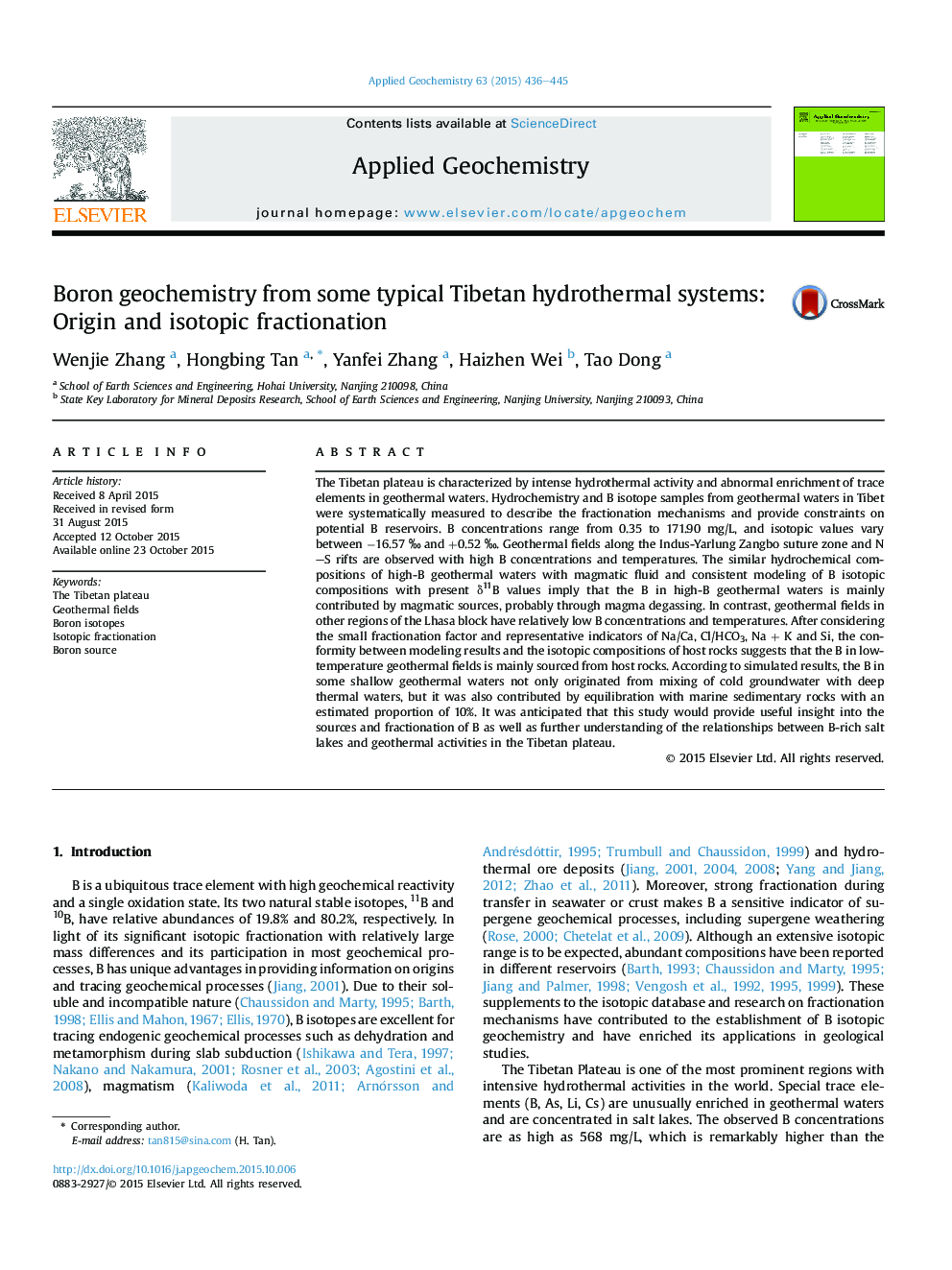| کد مقاله | کد نشریه | سال انتشار | مقاله انگلیسی | نسخه تمام متن |
|---|---|---|---|---|
| 6334986 | 1620228 | 2015 | 10 صفحه PDF | دانلود رایگان |
- Chemical and boron isotopic data of geothermal waters in Tibetan plateau were introduced.
- Unusual enrichment of boron in Tibetan geothermal waters is related to magmatic and host rocks.
- Boron distribution and isotopic fractionation were quantitatively modeled during geochemical processes.
The Tibetan plateau is characterized by intense hydrothermal activity and abnormal enrichment of trace elements in geothermal waters. Hydrochemistry and B isotope samples from geothermal waters in Tibet were systematically measured to describe the fractionation mechanisms and provide constraints on potential B reservoirs. B concentrations range from 0.35 to 171.90 mg/L, and isotopic values vary between â16.57 Ⱐand +0.52 â°. Geothermal fields along the Indus-Yarlung Zangbo suture zone and N-S rifts are observed with high B concentrations and temperatures. The similar hydrochemical compositions of high-B geothermal waters with magmatic fluid and consistent modeling of B isotopic compositions with present δ11B values imply that the B in high-B geothermal waters is mainly contributed by magmatic sources, probably through magma degassing. In contrast, geothermal fields in other regions of the Lhasa block have relatively low B concentrations and temperatures. After considering the small fractionation factor and representative indicators of Na/Ca, Cl/HCO3, Na + K and Si, the conformity between modeling results and the isotopic compositions of host rocks suggests that the B in low-temperature geothermal fields is mainly sourced from host rocks. According to simulated results, the B in some shallow geothermal waters not only originated from mixing of cold groundwater with deep thermal waters, but it was also contributed by equilibration with marine sedimentary rocks with an estimated proportion of 10%. It was anticipated that this study would provide useful insight into the sources and fractionation of B as well as further understanding of the relationships between B-rich salt lakes and geothermal activities in the Tibetan plateau.
Journal: Applied Geochemistry - Volume 63, December 2015, Pages 436-445
